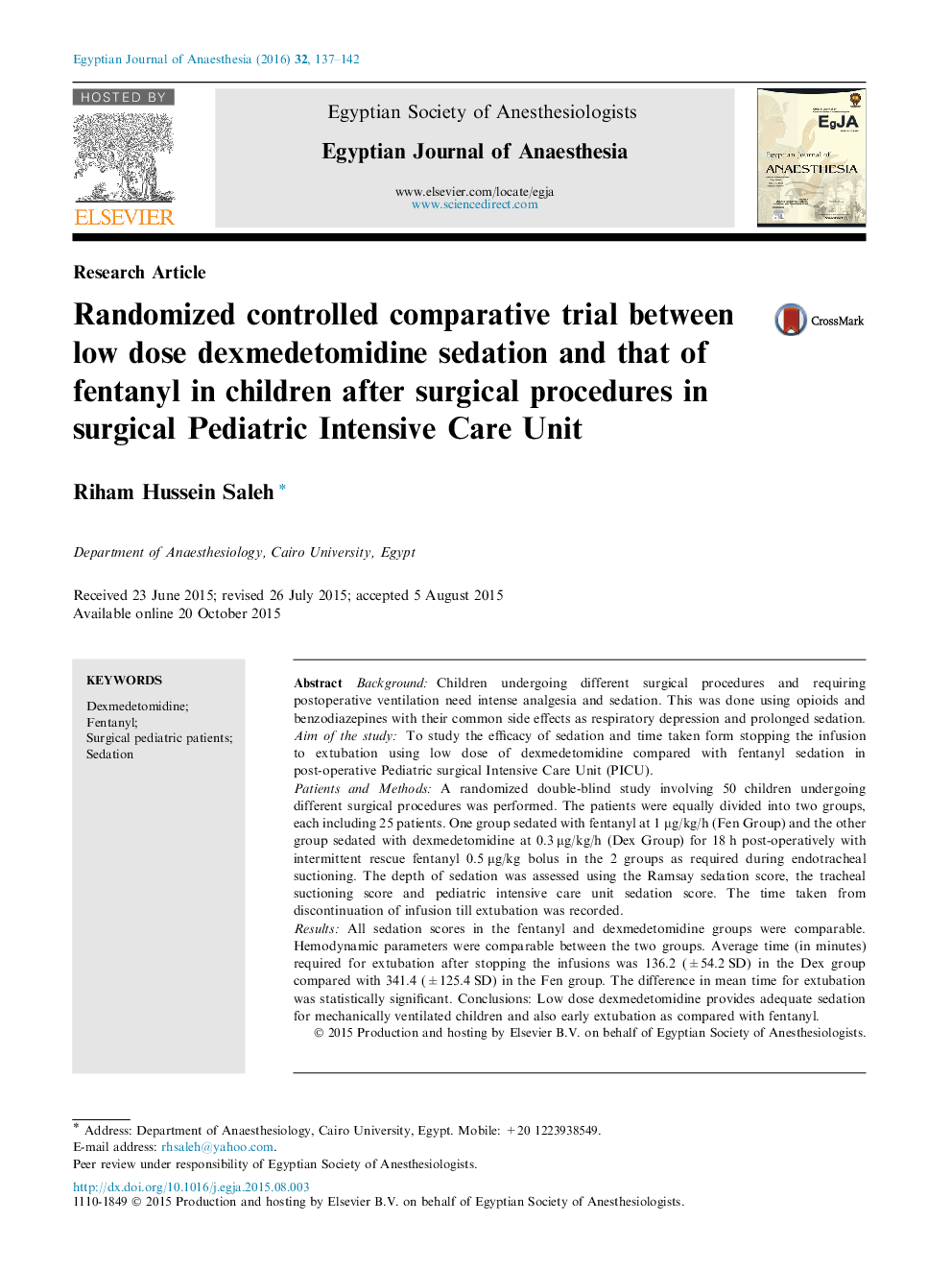| Article ID | Journal | Published Year | Pages | File Type |
|---|---|---|---|---|
| 2756223 | Egyptian Journal of Anaesthesia | 2016 | 6 Pages |
BackgroundChildren undergoing different surgical procedures and requiring postoperative ventilation need intense analgesia and sedation. This was done using opioids and benzodiazepines with their common side effects as respiratory depression and prolonged sedation.Aim of the studyTo study the efficacy of sedation and time taken form stopping the infusion to extubation using low dose of dexmedetomidine compared with fentanyl sedation in post-operative Pediatric surgical Intensive Care Unit (PICU).Patients and MethodsA randomized double-blind study involving 50 children undergoing different surgical procedures was performed. The patients were equally divided into two groups, each including 25 patients. One group sedated with fentanyl at 1 μg/kg/h (Fen Group) and the other group sedated with dexmedetomidine at 0.3 μg/kg/h (Dex Group) for 18 h post-operatively with intermittent rescue fentanyl 0.5 μg/kg bolus in the 2 groups as required during endotracheal suctioning. The depth of sedation was assessed using the Ramsay sedation score, the tracheal suctioning score and pediatric intensive care unit sedation score. The time taken from discontinuation of infusion till extubation was recorded.ResultsAll sedation scores in the fentanyl and dexmedetomidine groups were comparable. Hemodynamic parameters were comparable between the two groups. Average time (in minutes) required for extubation after stopping the infusions was 136.2 (±54.2 SD) in the Dex group compared with 341.4 (±125.4 SD) in the Fen group. The difference in mean time for extubation was statistically significant. Conclusions: Low dose dexmedetomidine provides adequate sedation for mechanically ventilated children and also early extubation as compared with fentanyl.
